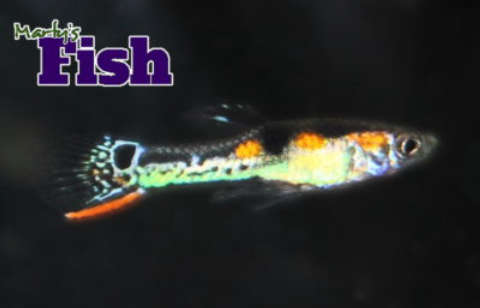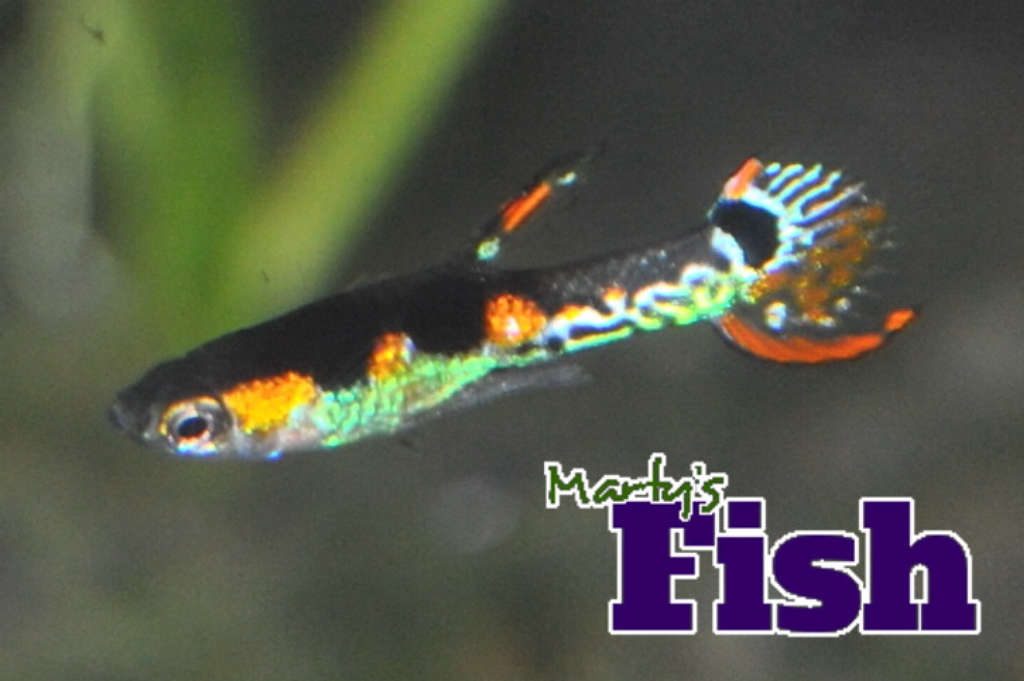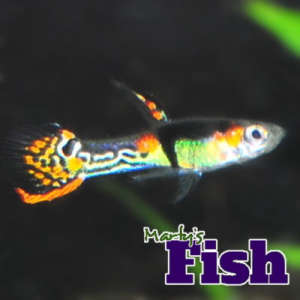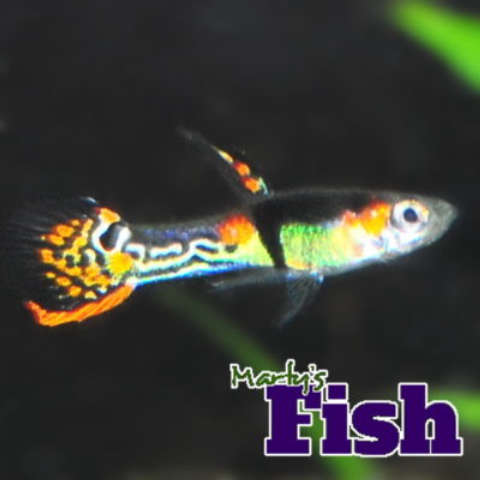Our Ongoing Project
First of all let me preface this article by saying we have not yet been able to develop what we would consider to be the perfect Snakeskin Orchid Endler. There is no, and probably never will be, what we would call a perfect Snakeskin Orchid Endler. We have had a couple of males come very close however we haven’t got there yet.
Like the original Orchid Endler strain from which this strain was developed, the Snakeskin Orchid Endler strain is highly variable and culling may be necessary in order to achieve the desired breeding results.
This article is for the purpose of showing how the Snakeskin Orchid strain got started and what we are working on when we are developing this unique and beautiful stain.
Anytime you order Snakeskin Orchid Endlers from us it is likely that the males will have one or two of the traits we are working on however we have never created the perfect example of what we are working towards.
Where The Snakeskin Orchid Endler Came From

In February of 2013 we purchased our pure N Class Orchid Endlers from AdrianHD. We chose Orchid Endlers because we thought they were some of the most beautiful Endlers available at the time.
In September of 2014 we found a single male Orchid Endler that looked different than any of the Endlers we had previously seen in our tanks.
We knew it was impossible for him to be a hybrid because we didn’t keep any other fish except for some Goldfish we kept in a pond outside and some pure N Class Lime Green Endlers that we had received from AdrianHD in August of 2014.
Because the male was full grown when we discovered him in our colony we knew he had to have been born in July or earlier making it impossible for the male to be anything but pure Orchid Endler.
Orchid Endlers are a highly variable strain, each male is usually slightly different than the other males. Extreme variations in color or pattern however is quite rare but occur more often than you may see in other species due to the rapid reproduction rate of Endlers.
Knowing that we had a rare variation or mutation of an Orchid Endler we were excited to try to produce a unique line of Endlers from this one beautiful male.

Creating The Strain
Because this was a one-of-a-kind Endler we were concerned that something would happen to him before we could create the new strain.

We knew we were going to have to do some inbreeding in order to get the markings to show consistently on the new strain. We set up a 12 gallon tank in a location we knew we could observe him often and placed several Orchid Endler fry in the tank with him.
As the fry matured we removed any males that where in the tank. Fortunately you can separate young male Orchid Endlers when they are fairly young as they start to develop a small dark spot on the tail portion of the body when they are still quite small.
This left us with only small, virgin female Orchid Endlers in the tank with the single male. After 3-4 months the small small females produced fry of their own. After they produced their first drop of fry we removed them from the tank.
We anxiously waited for the young fry to grow up to be old enough for us to see if they had any of the snake pattern.
As the fry aged we removed the males from the tank leaving the young female Endlers in with the original Endler with the snakeskin pattern. The males were placed in their own 10 gallon tank for observation. After about three months it became obvious that none of the males had the snakeskin pattern.
By now the second generation of females were actively breeding with the unique male. We once again waited for them to drop fry. When the females dropped fry we once again removed the females leaving only the fry and the unique male Endler. After waiting a couple of months we could see that this batch of males was going to be different.
The young males started showing tiny patterns which as they aged became more intense and defined. The original male had an orange sword however all of the young males had light blue swords. Within a month or so this light blue sword turned orange like the original Snakeskin Orchid Endler.
At this point we knew we were on the right path and would probably be able to create a new and unique Endler strain.
We continued this process for a few generations removing males that did not have strong patterns and coloration until we had a few nice looking males that contained the traits that we desired.
Some of the resulting males had a what we like to call a “black belt” which is a vertical black band that extended from the dorsal fin to vertically to the pelvic fin. This “black belt” was also sometimes found in the original Orchid Endler population.
Once we had a nice selection of males that we were happy with the coloration and markings we removed all the females and bred these males with females from our original Orchid Endler colony. This was to help reduce any negative effects of inbreeding.
After the females dropped fry we removed the older females leaving only fry.
The resulting fry and the selected males then became our main breeding stock.
We took each of the males that we felt where the very best of the best and gave them their own tank and a handful of females.
From that point on we have used our usual selective breeding techniques to help create a more beautiful strain. As part of the selective breeding process we remove males from the breeding tanks and replace them any time we find males that have better coloration or patterns.
Selective Breeding For Improved Coloration, Patterns and Fins
Because this is a completely new strain developed by us we have the opportunity to improve the strain in a manner that we feel will make it the most beautiful.
There are a few unique traits that we like about this strain and we are continuing to try to develop through selective breeding:
- As with all of our Endlers we work to develop patterns and coloration that are as intense and well defined as possible.
- Males often have a “peacock eye” on the tail fin. It is not present in all fish but is seen in at least 50% of the males.
- We have been selectively breeding for a long colorful dorsal fin. This is a fairly common trait found in Endler hybrids but is not common in pure Endlers. About 50% of our males currently have longer than normal dorsal fins and about 20% of them have pronounced coloration on the dorsal fin.
- About 20% of the males have a “black bar”. This is a trait we think looks great with the snake pattern.
- Most of our males are being produced with orange dots rather than longer orange lines which are common on Orchid Endlers. The distinct orange dots are something we find desirable and continue to selective breed our Endlers for this type of coloration. We have found that many of the Endler strains will eventually develop longer orange lines if left to breed uncontrollably.
As you can see there are quite a few different aspects of this unique strain that we are continually working on. As this is a relatively new strain we will be continually working on it for years to come.
We are considering separating out some of these unique color and pattern variations into their own sub strains. For example we are considering having a regular “black hat” strain and a “black bar” strain.
We are even considering creating Endler/Endler hybrids of this beautiful strain to introduce even more unique and beautiful Endlers into the hobby.


